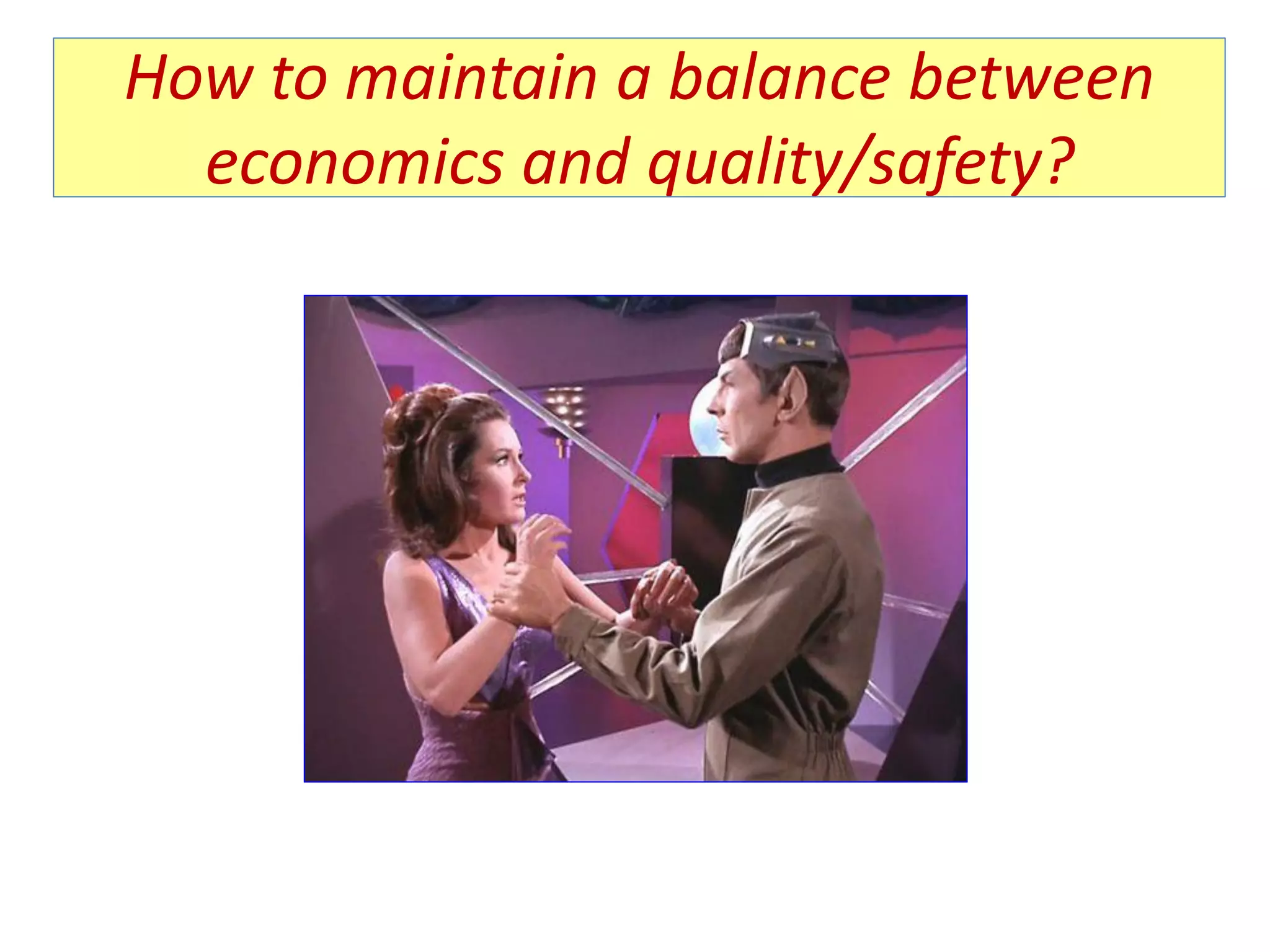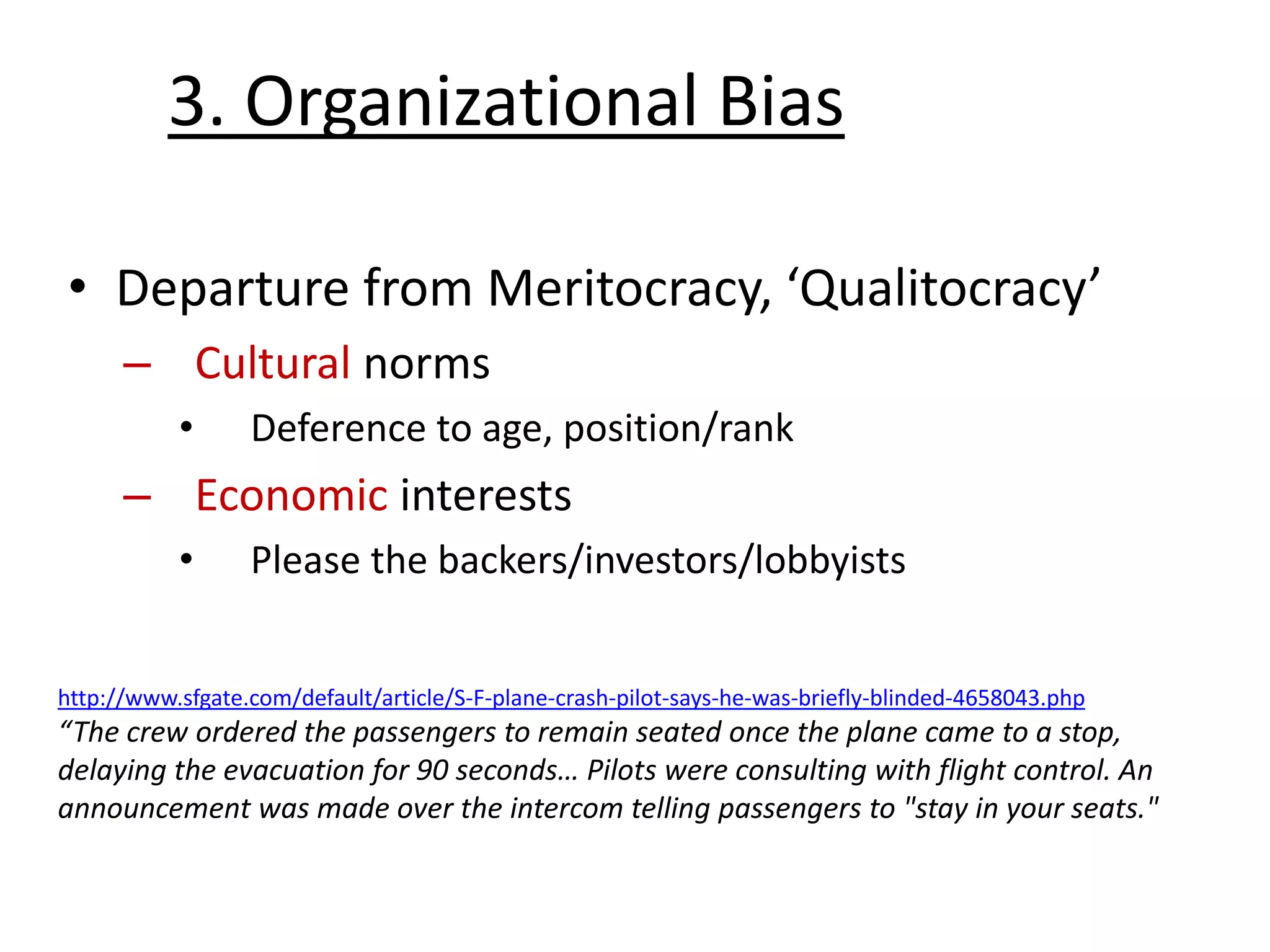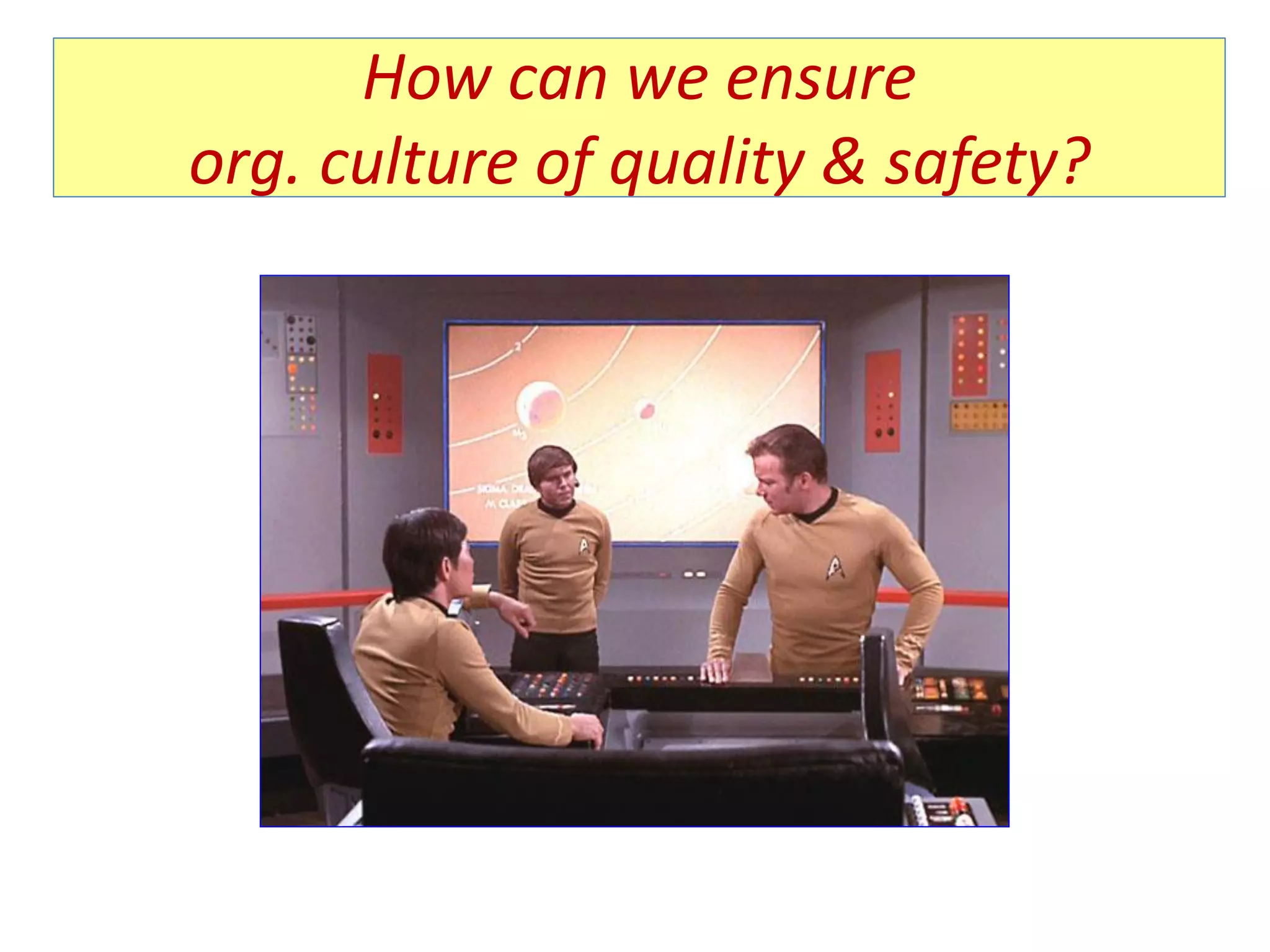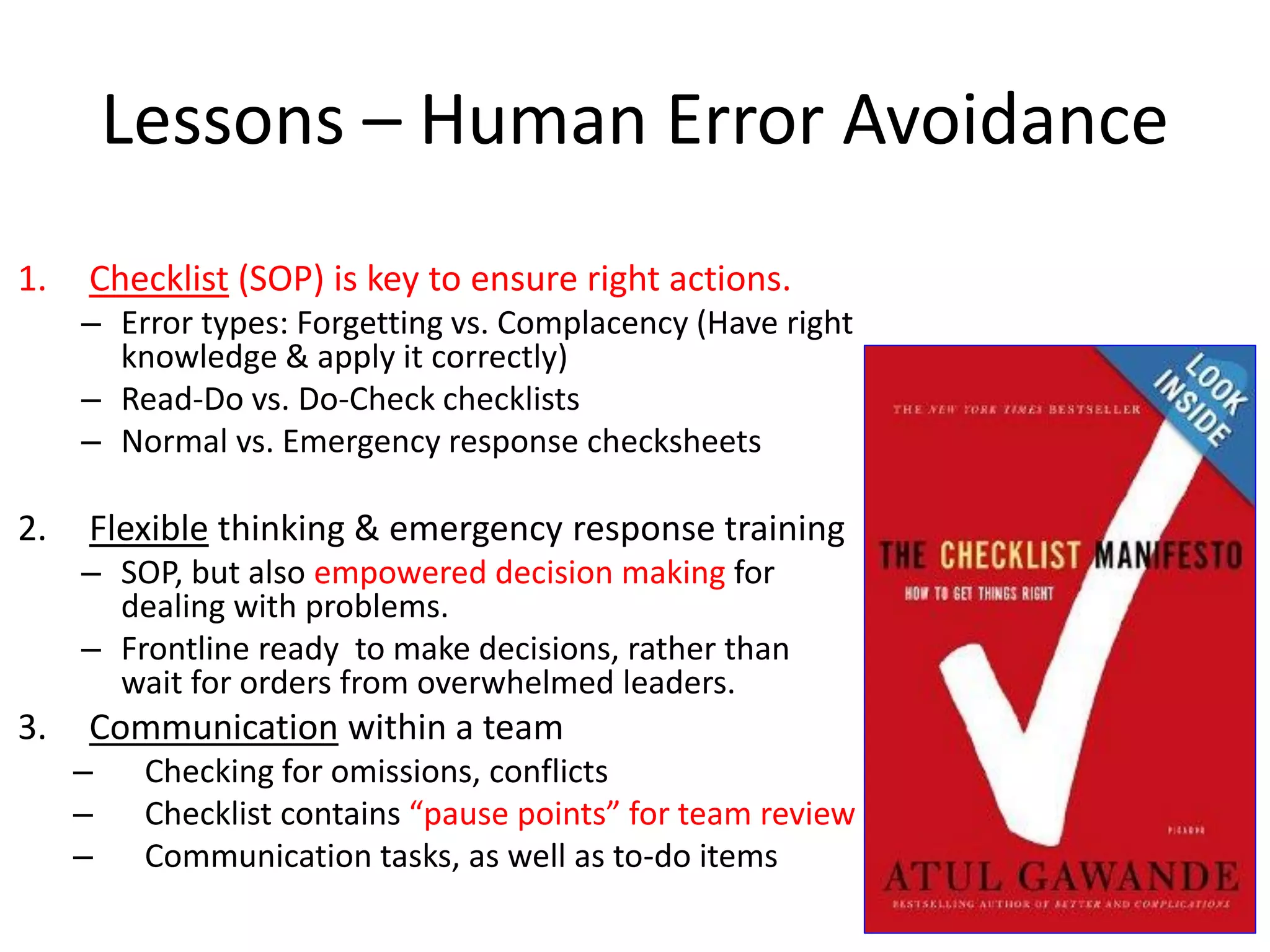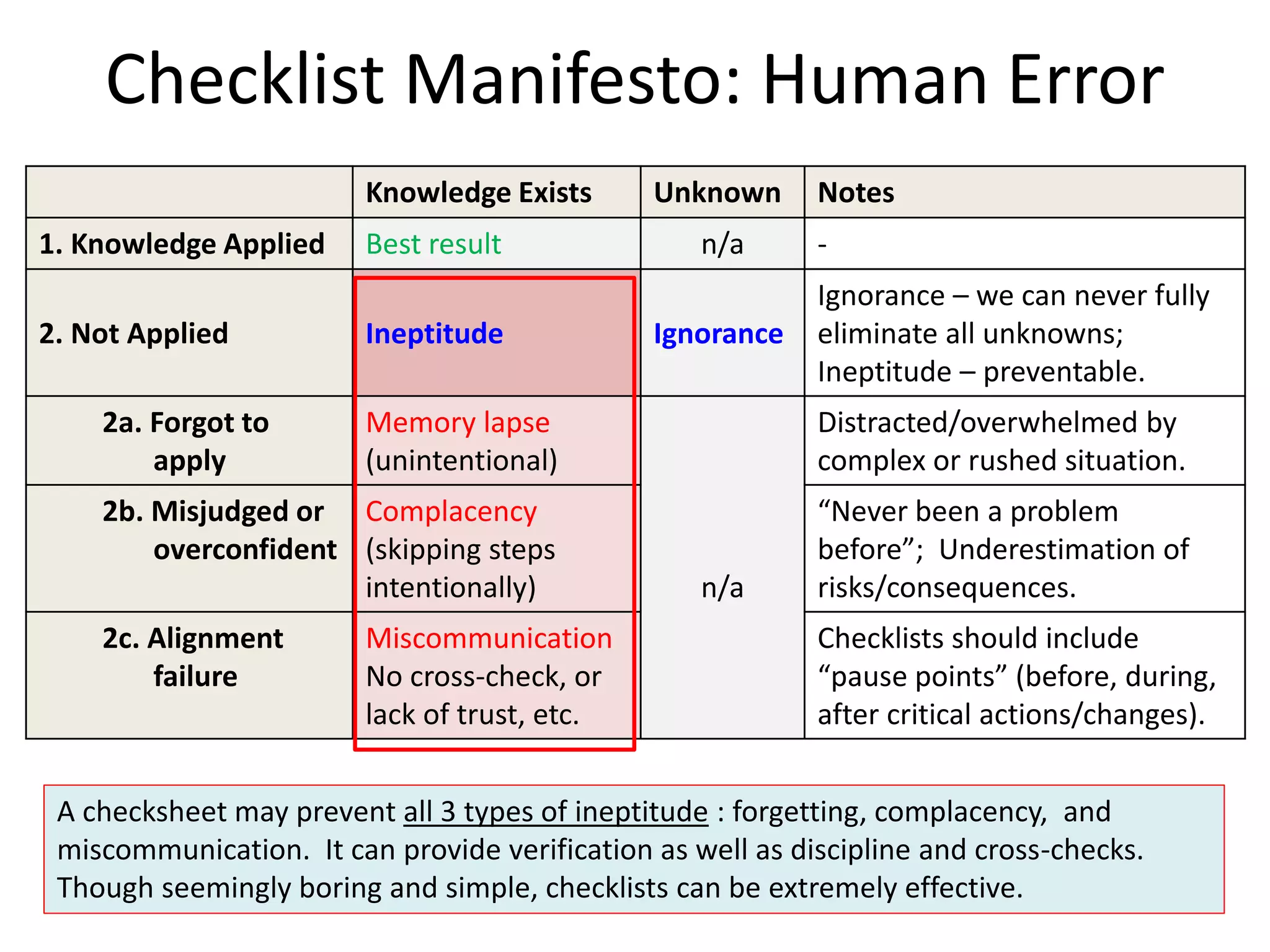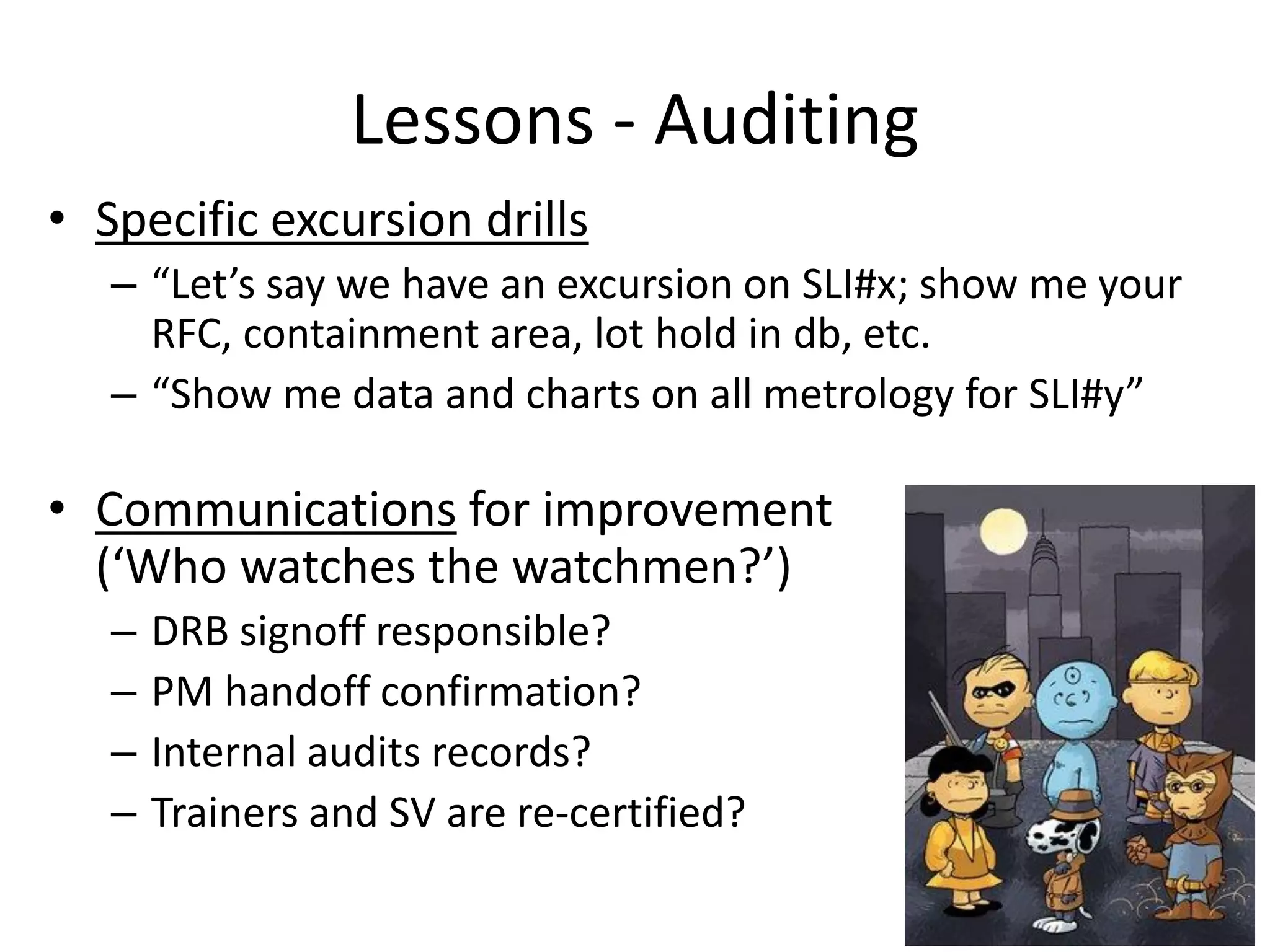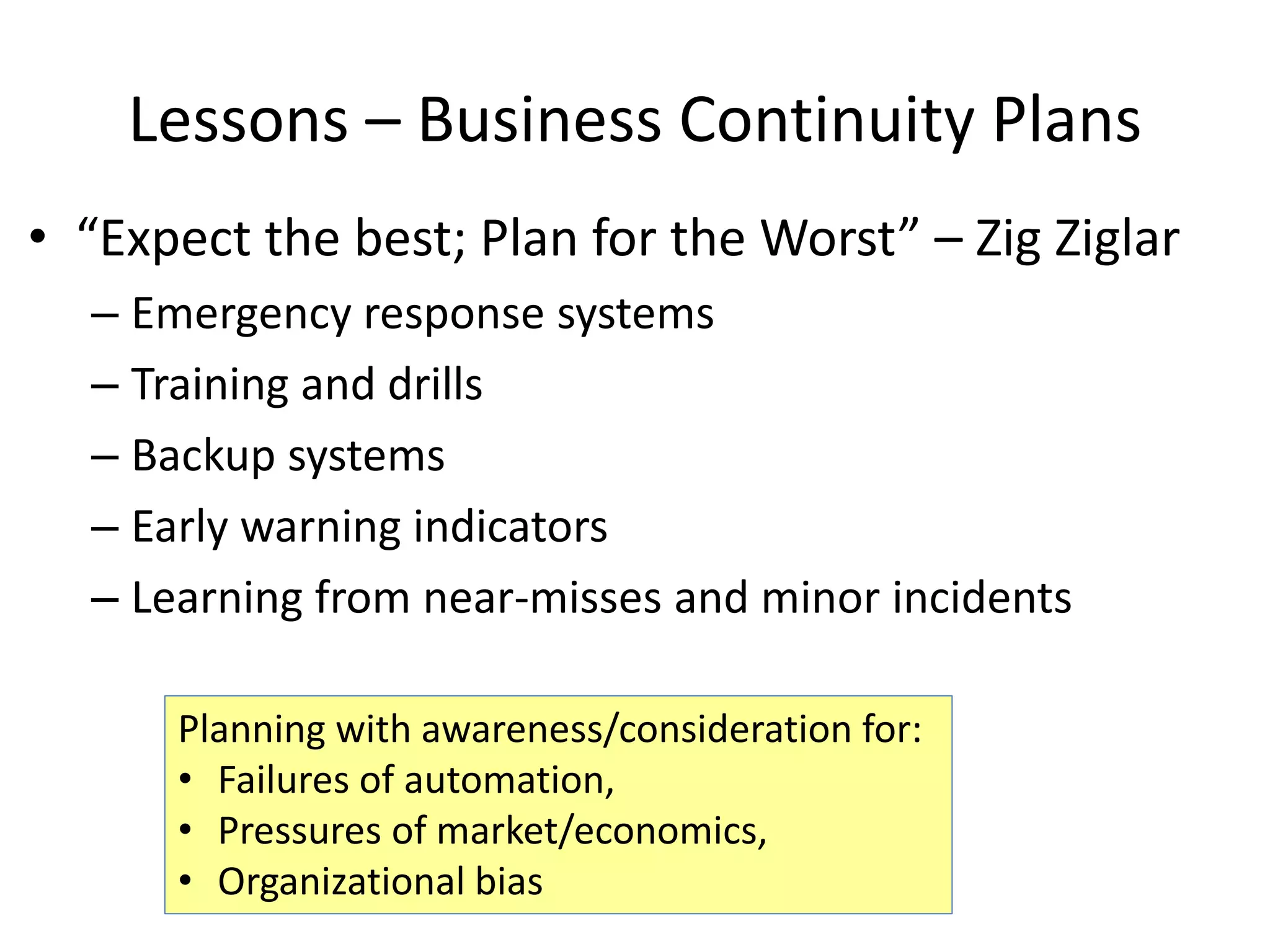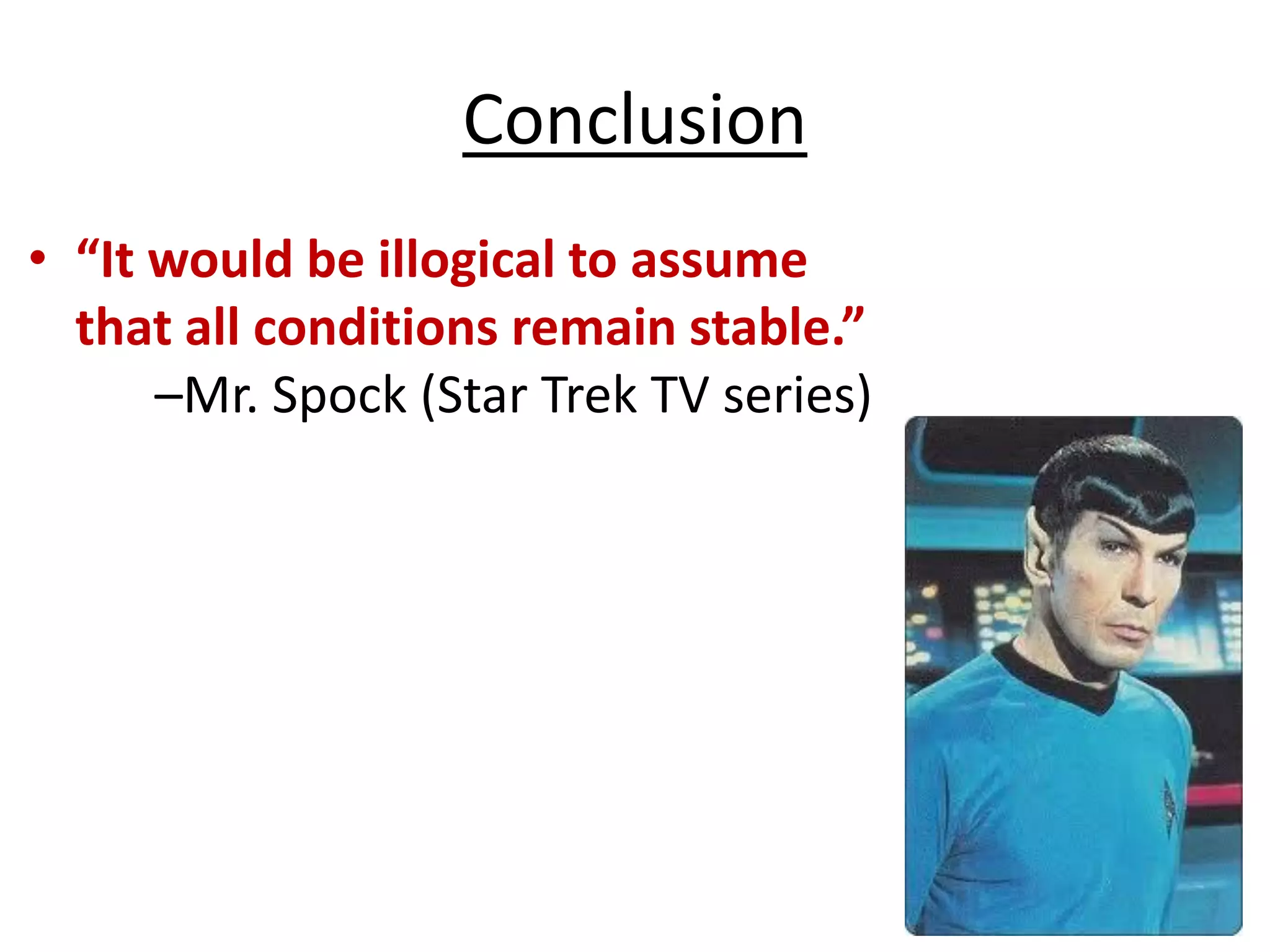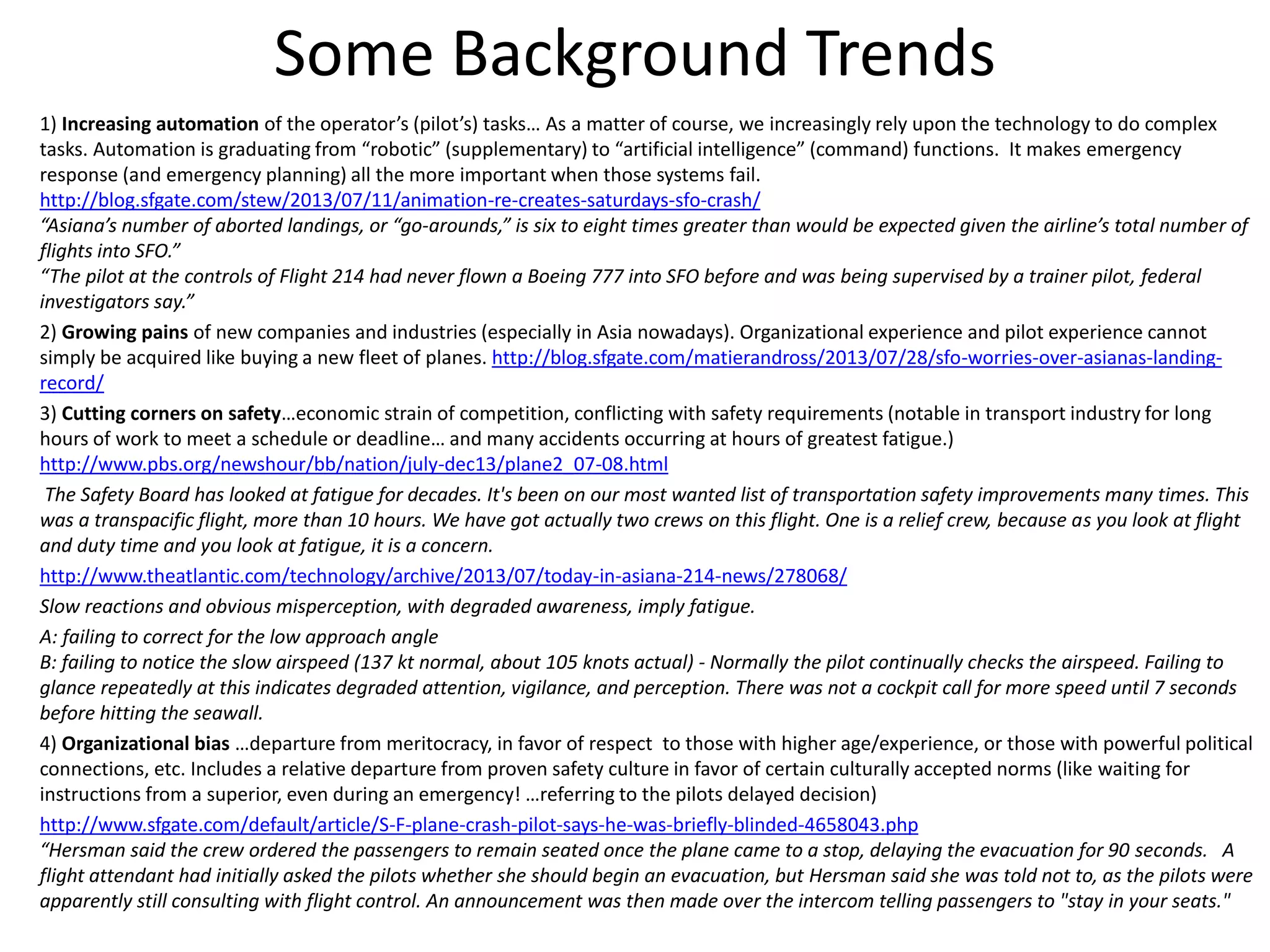The document discusses the Asiana Flight 214 accident, emphasizing key learnings regarding pilot error, the dangers of automation, and the impact of organizational culture on safety. It highlights misjudgments during landing, ineffective communication, and delayed evacuation that compounded the tragedy, including the death of a teenage girl due to rescue errors. The document concludes with lessons for quality assurance and the importance of maintaining human oversight despite increasing automation in aviation.
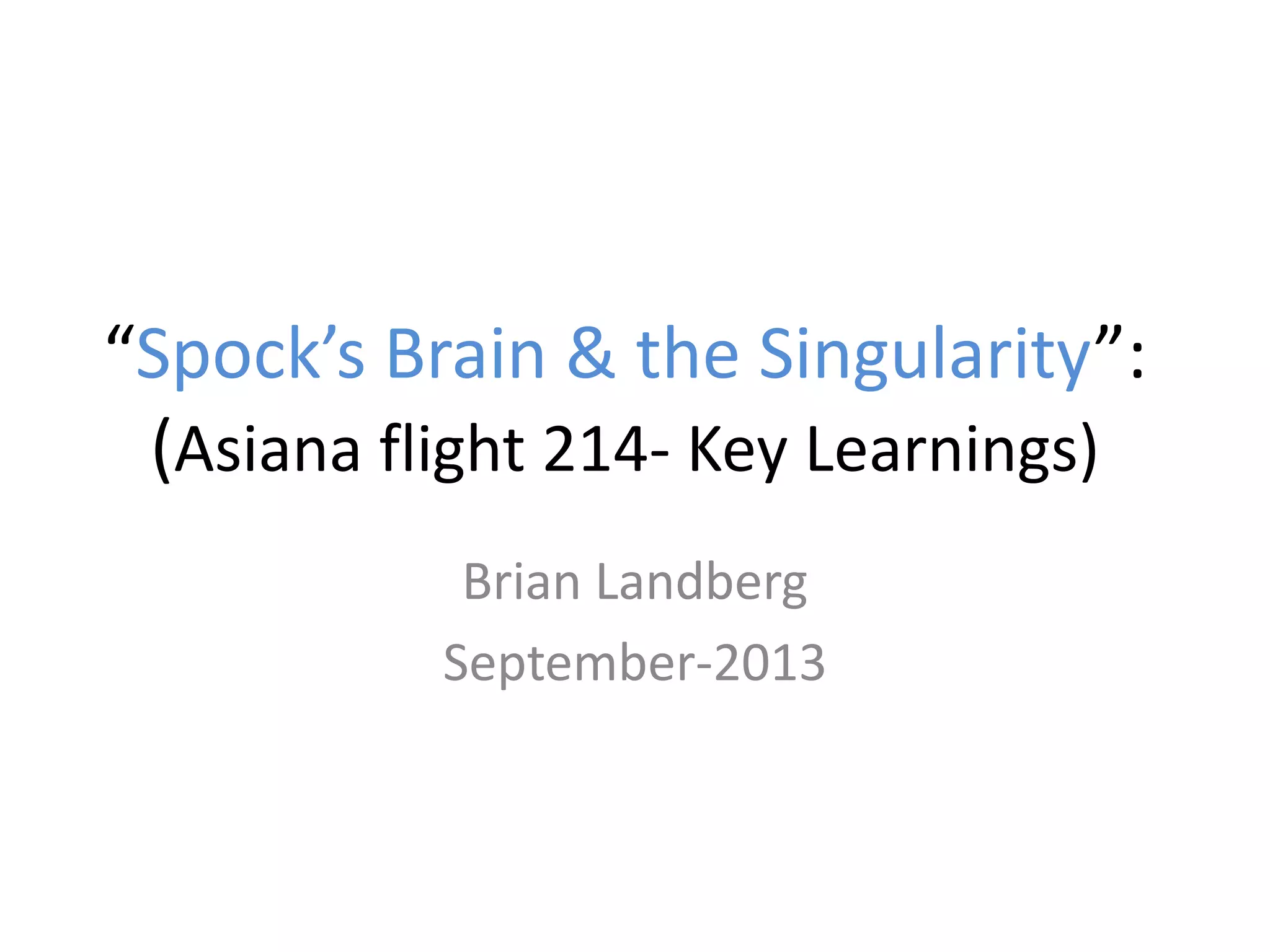
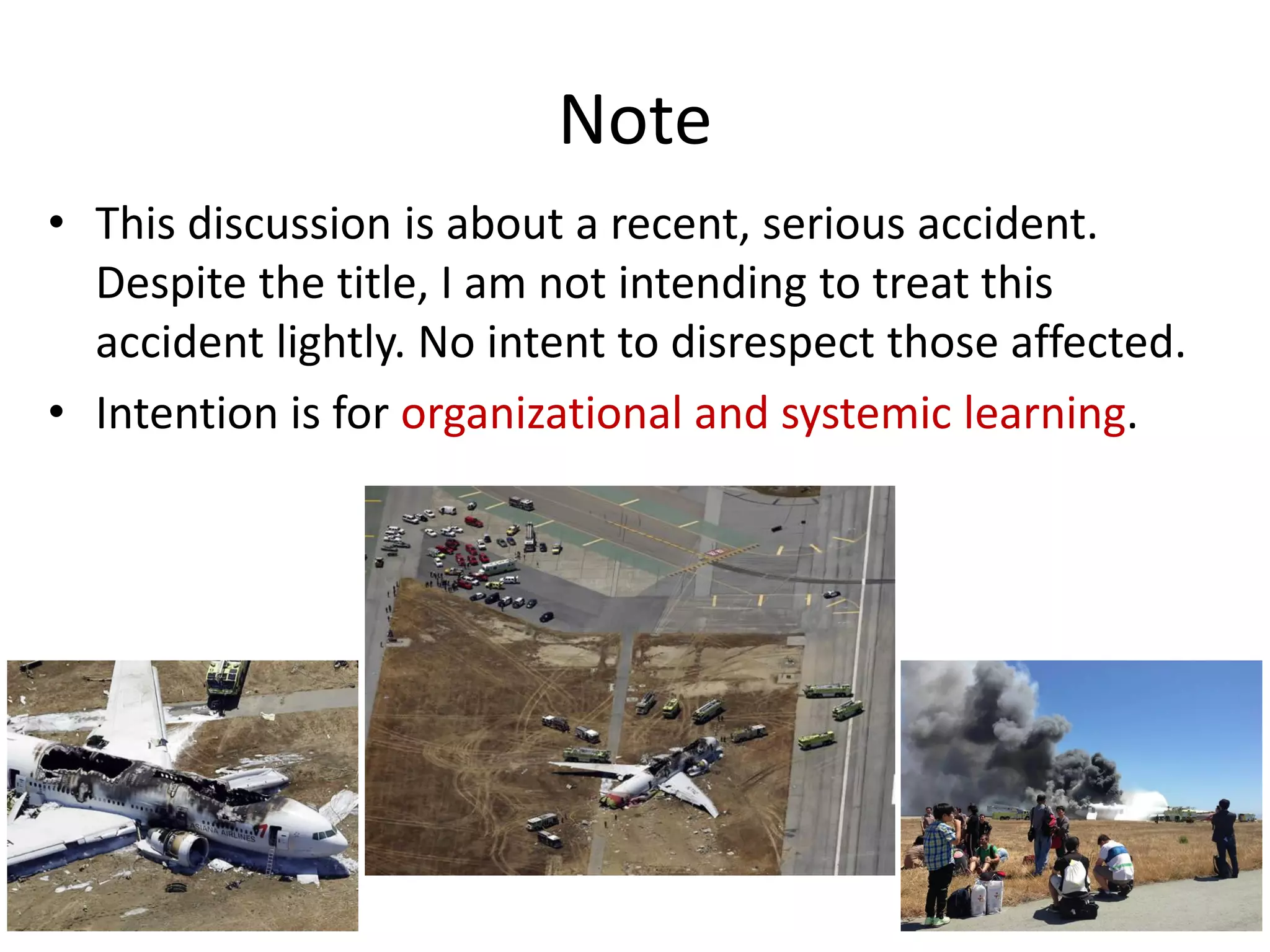
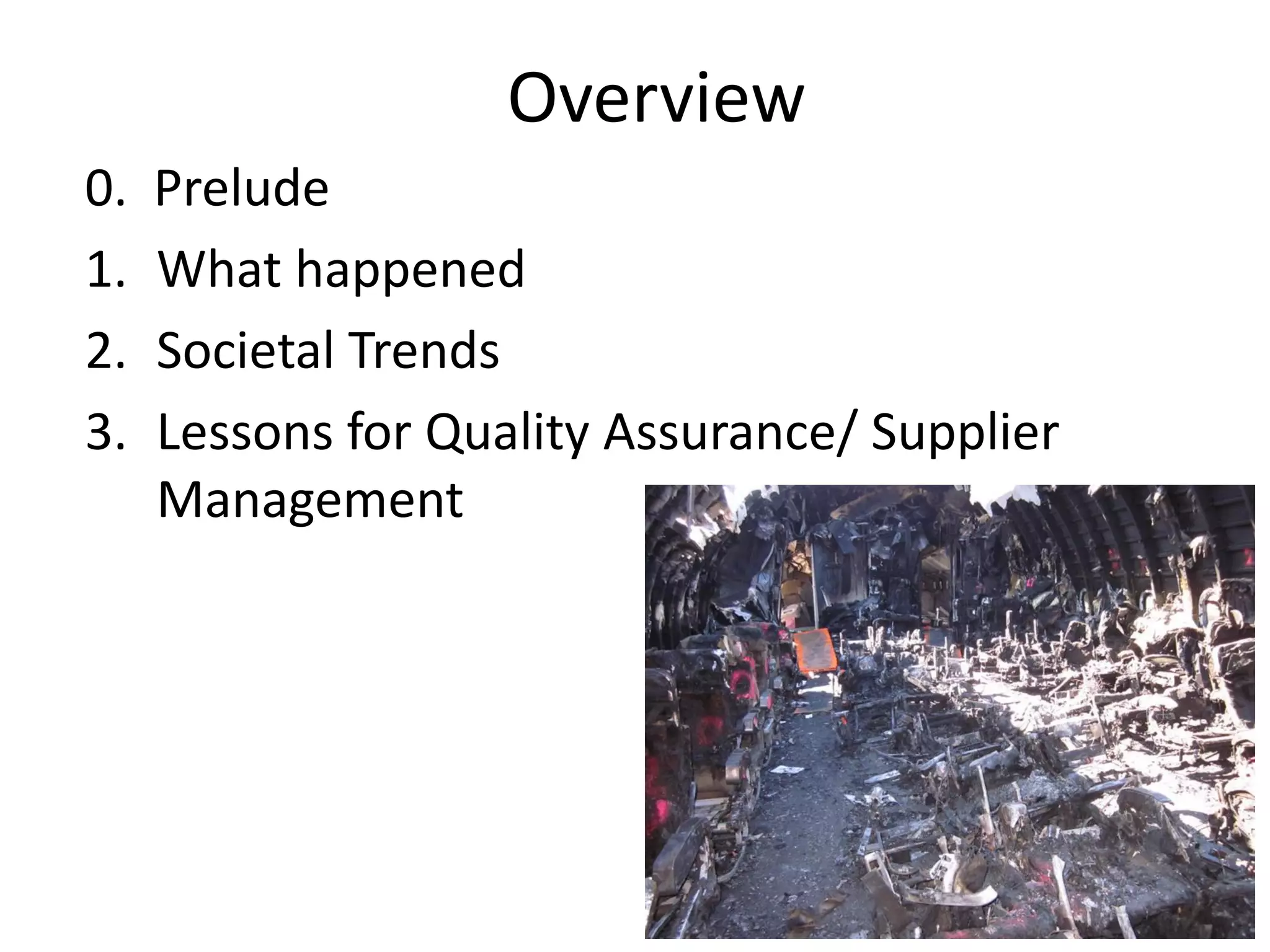
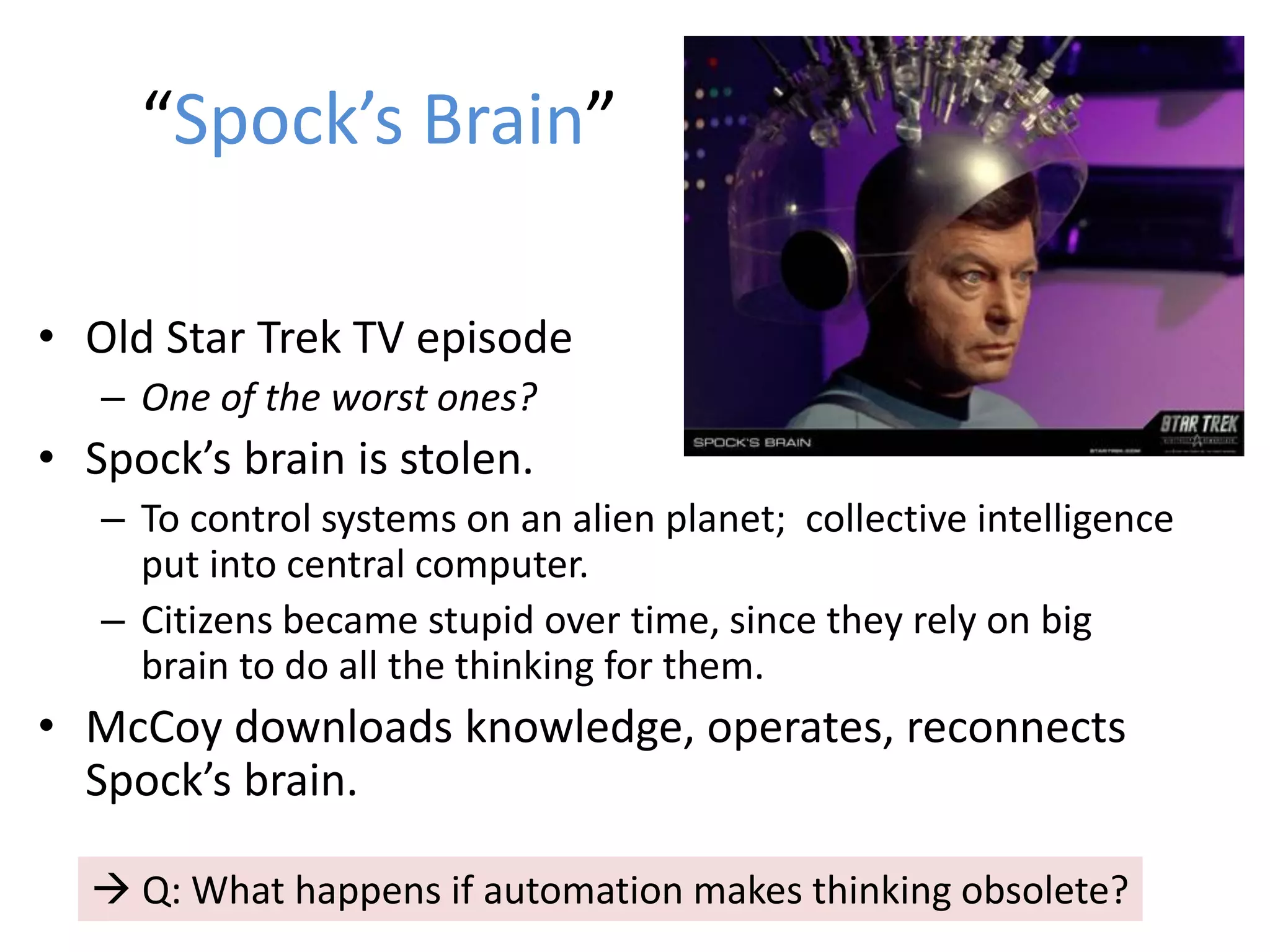


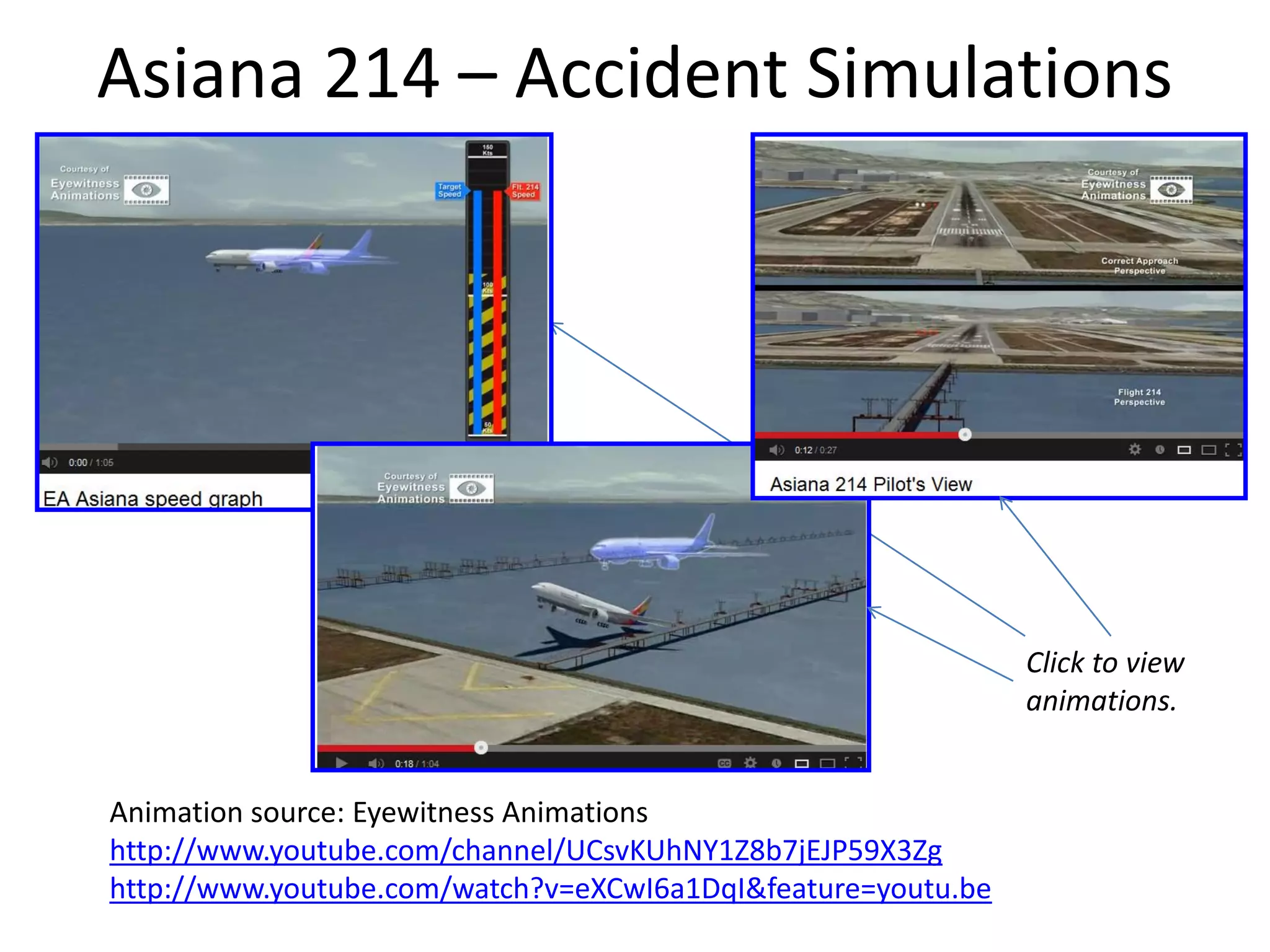
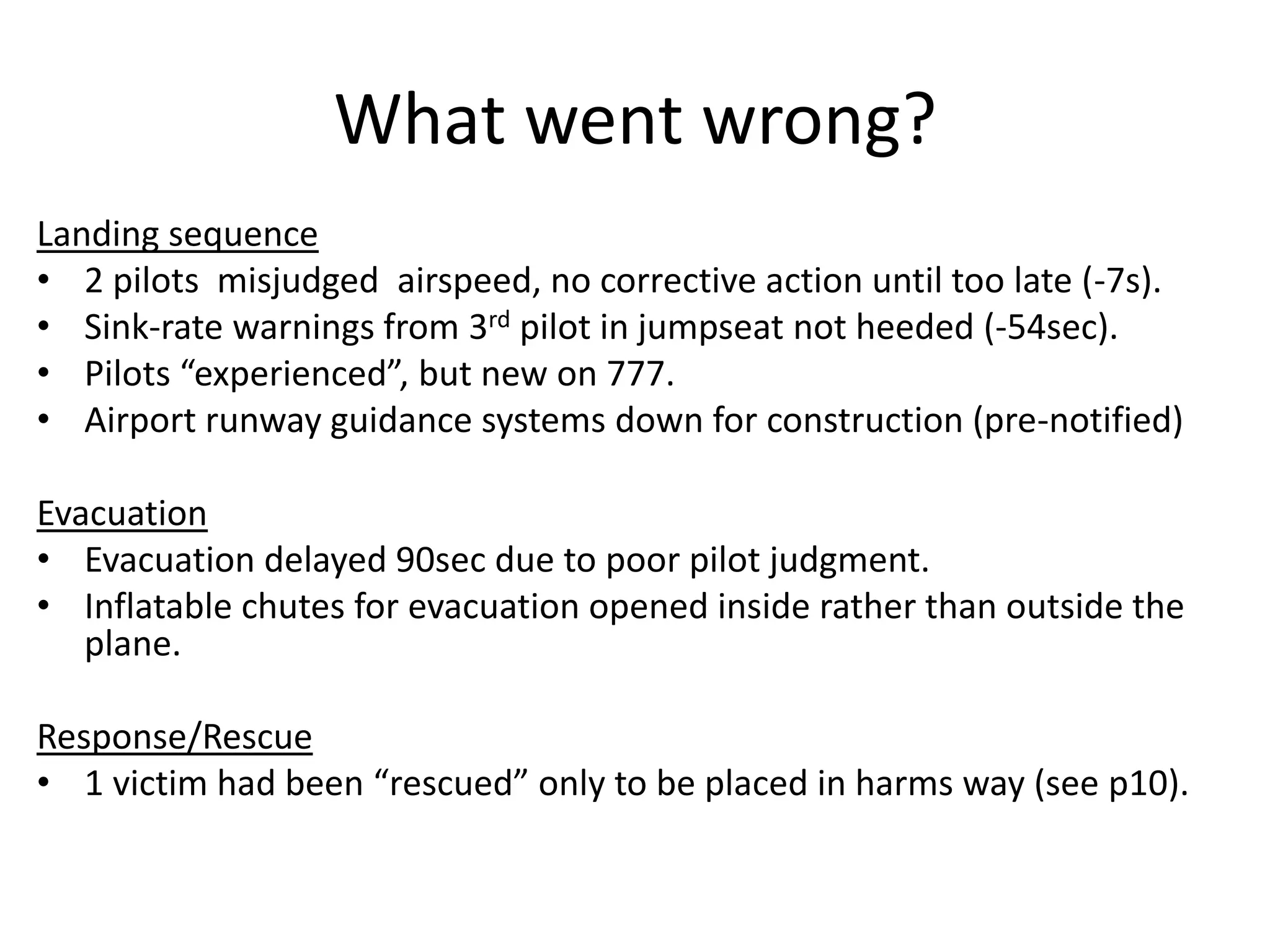
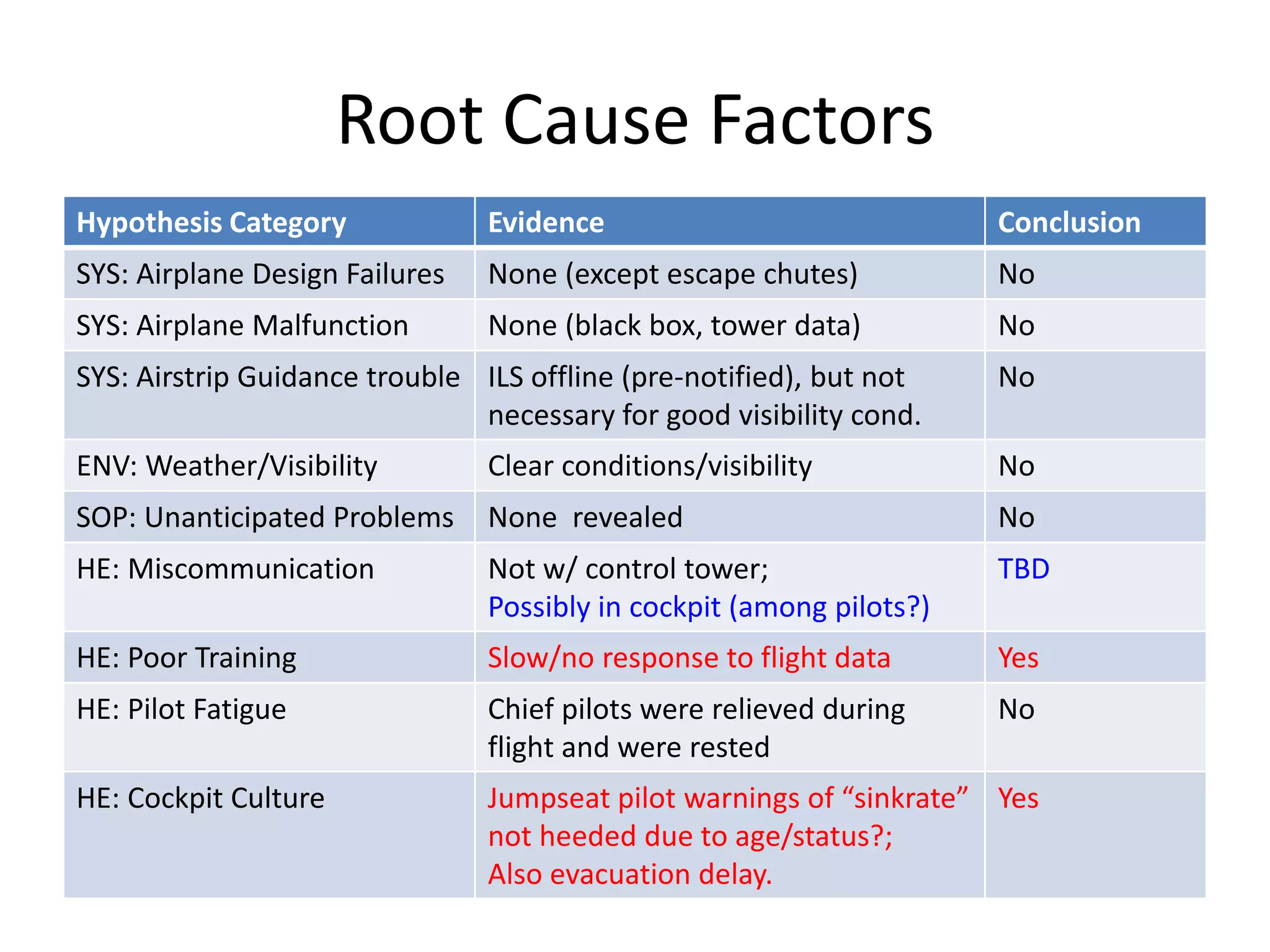
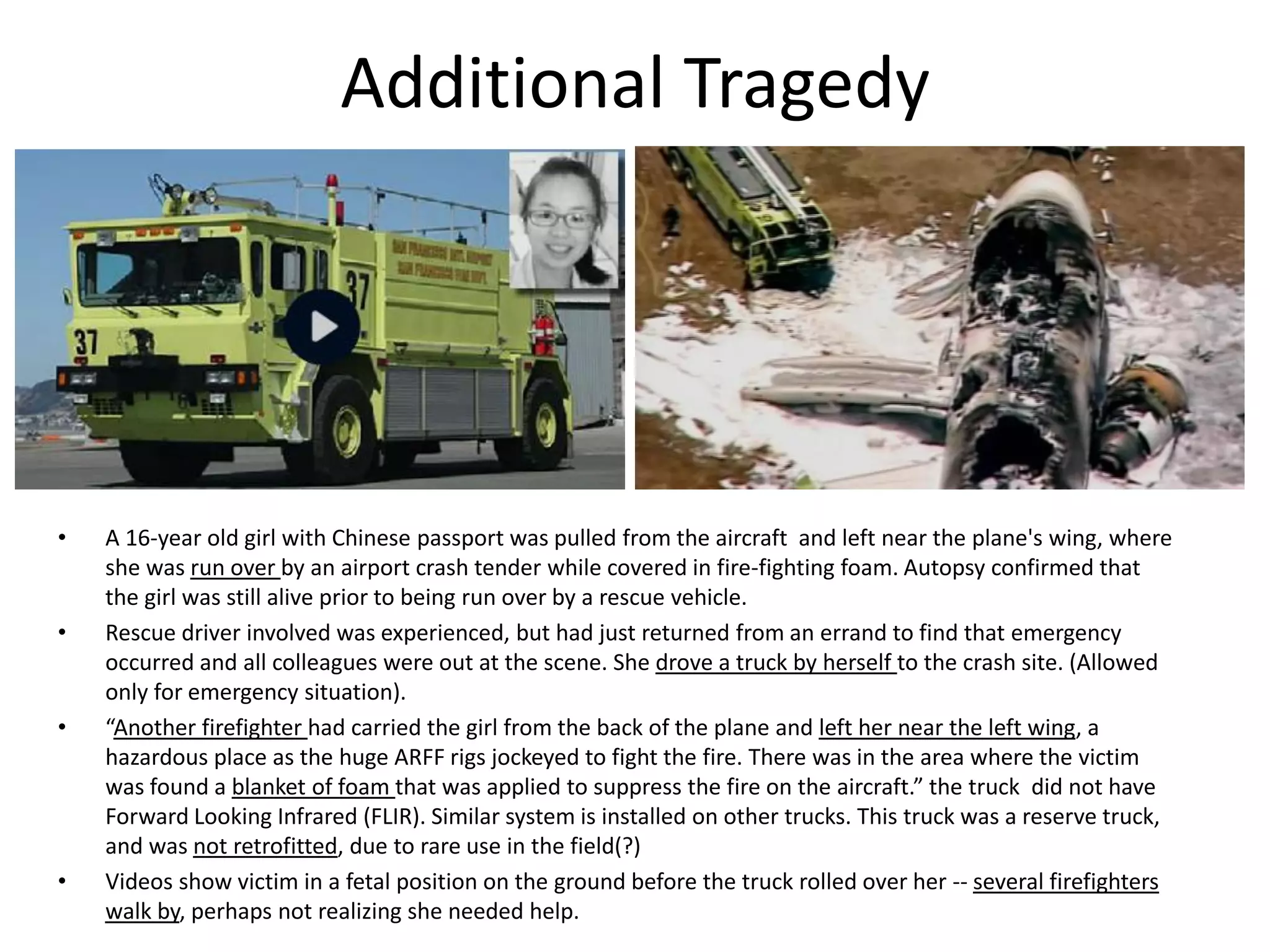
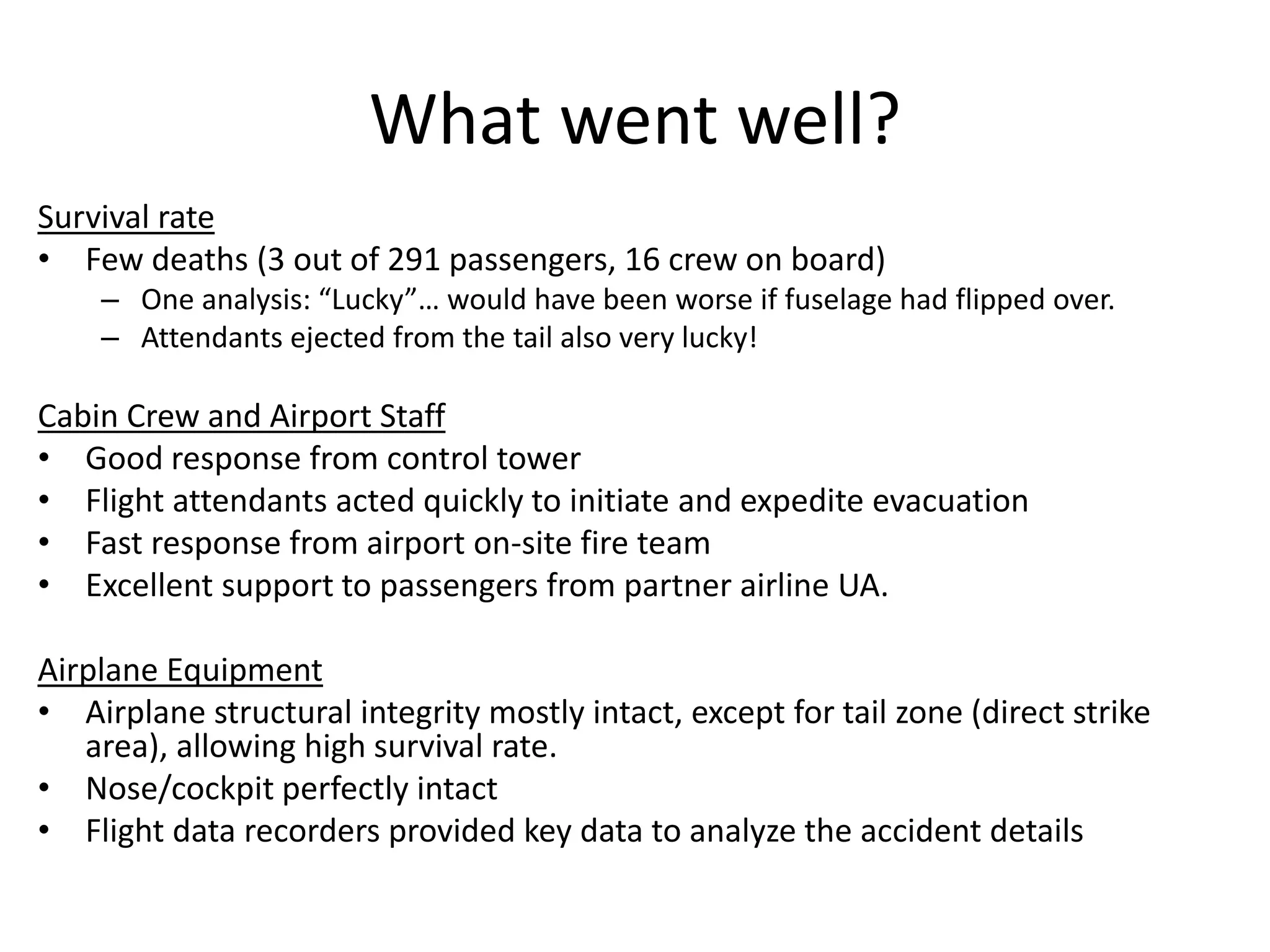
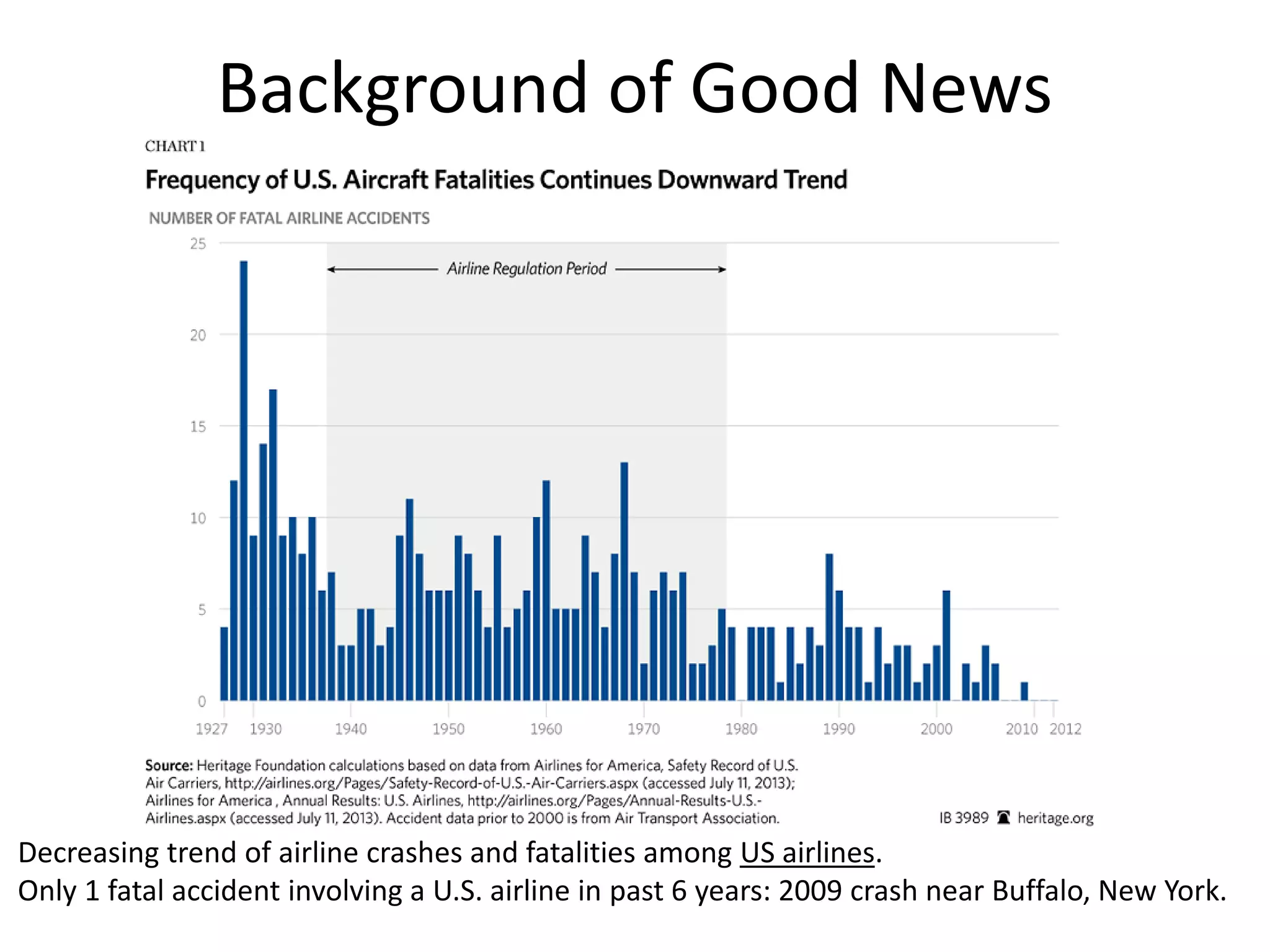
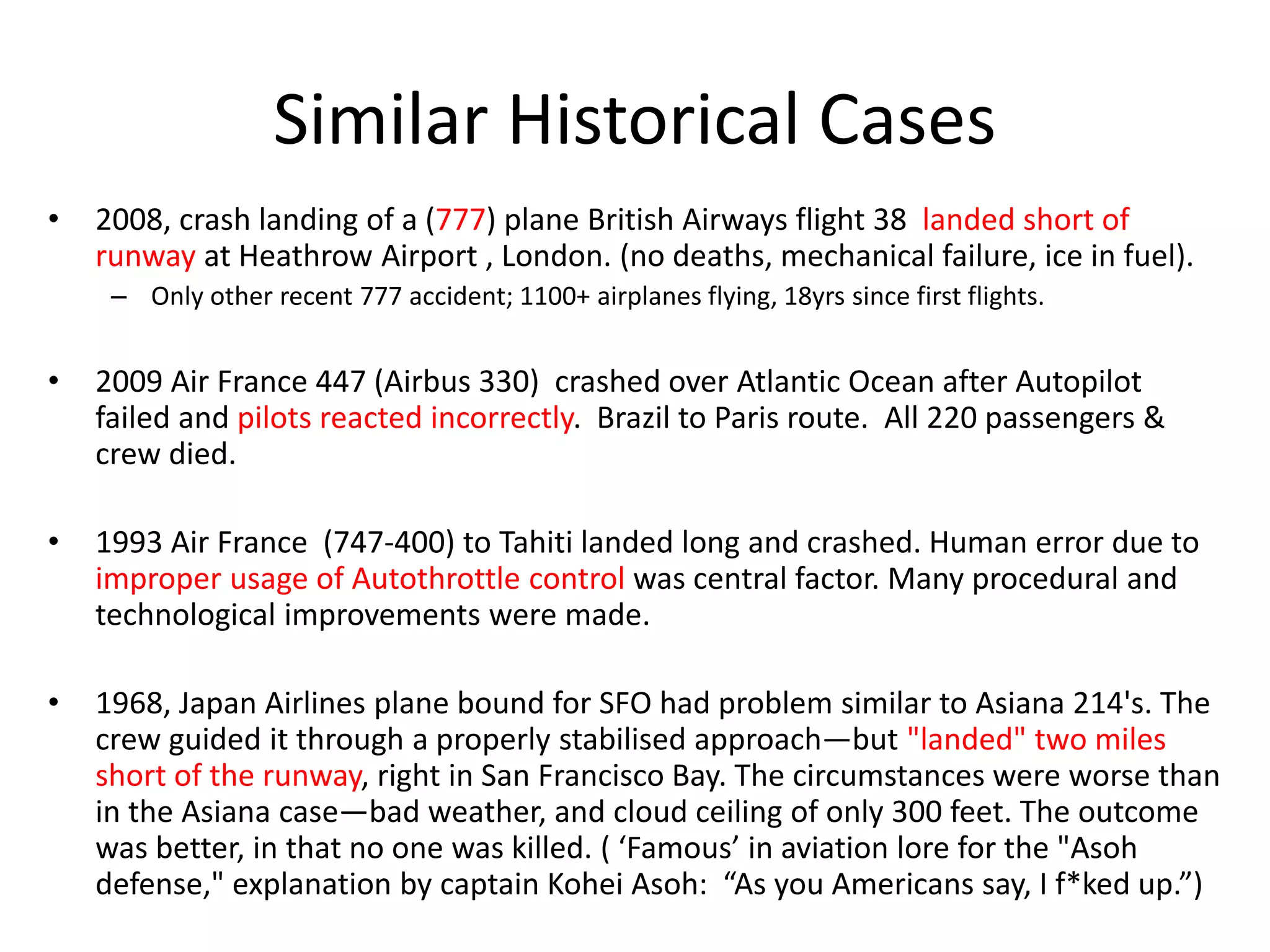

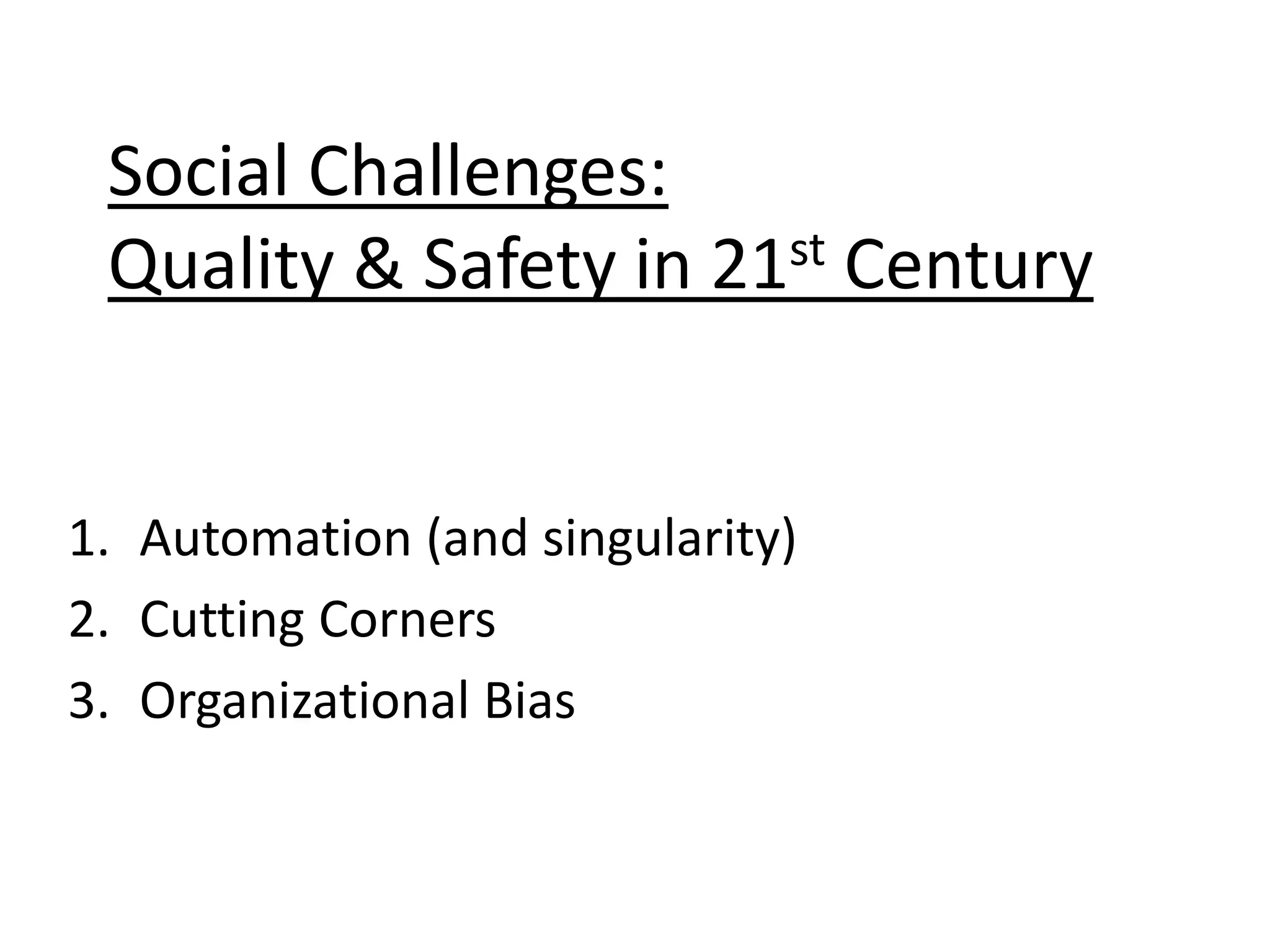
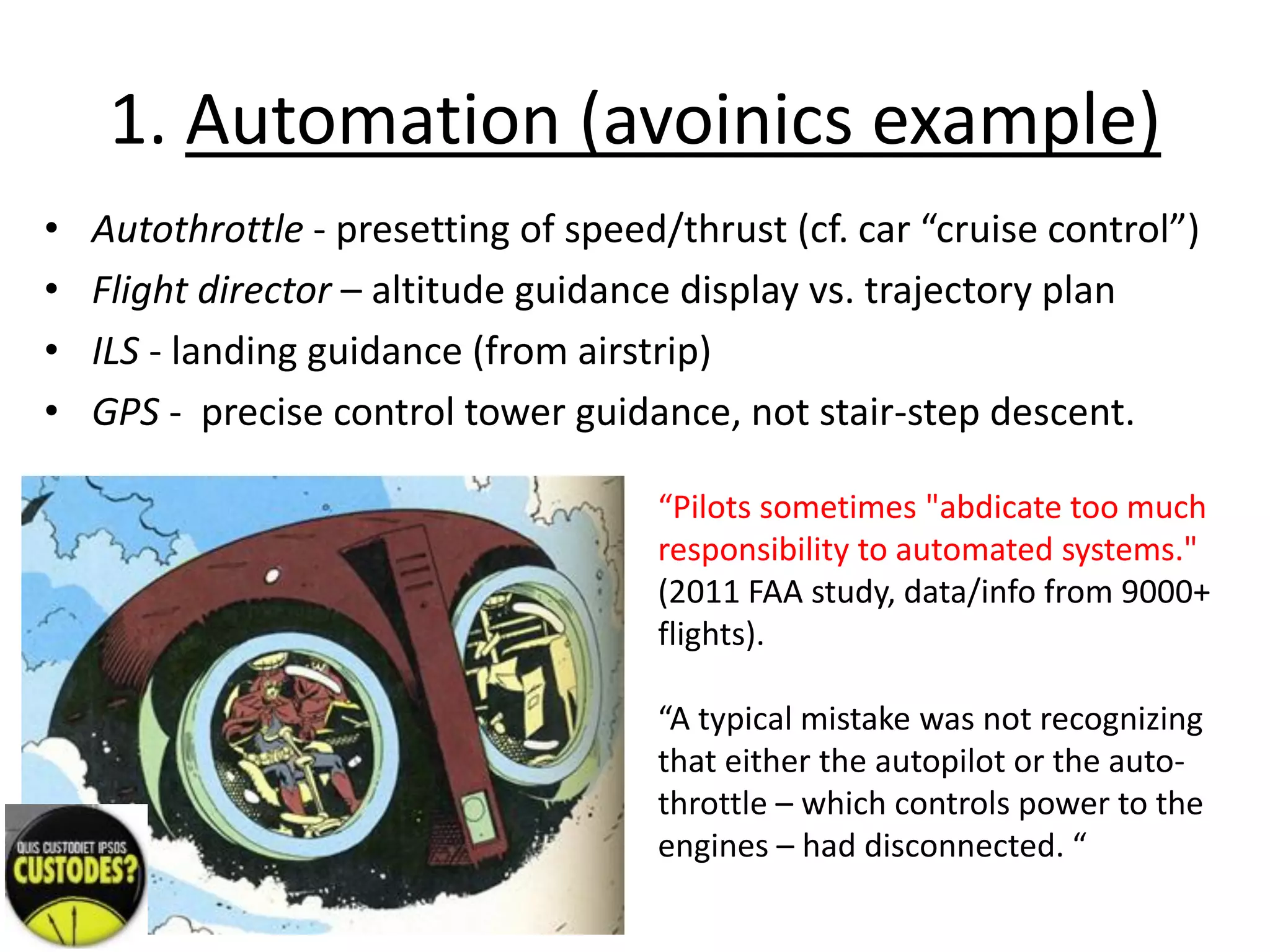
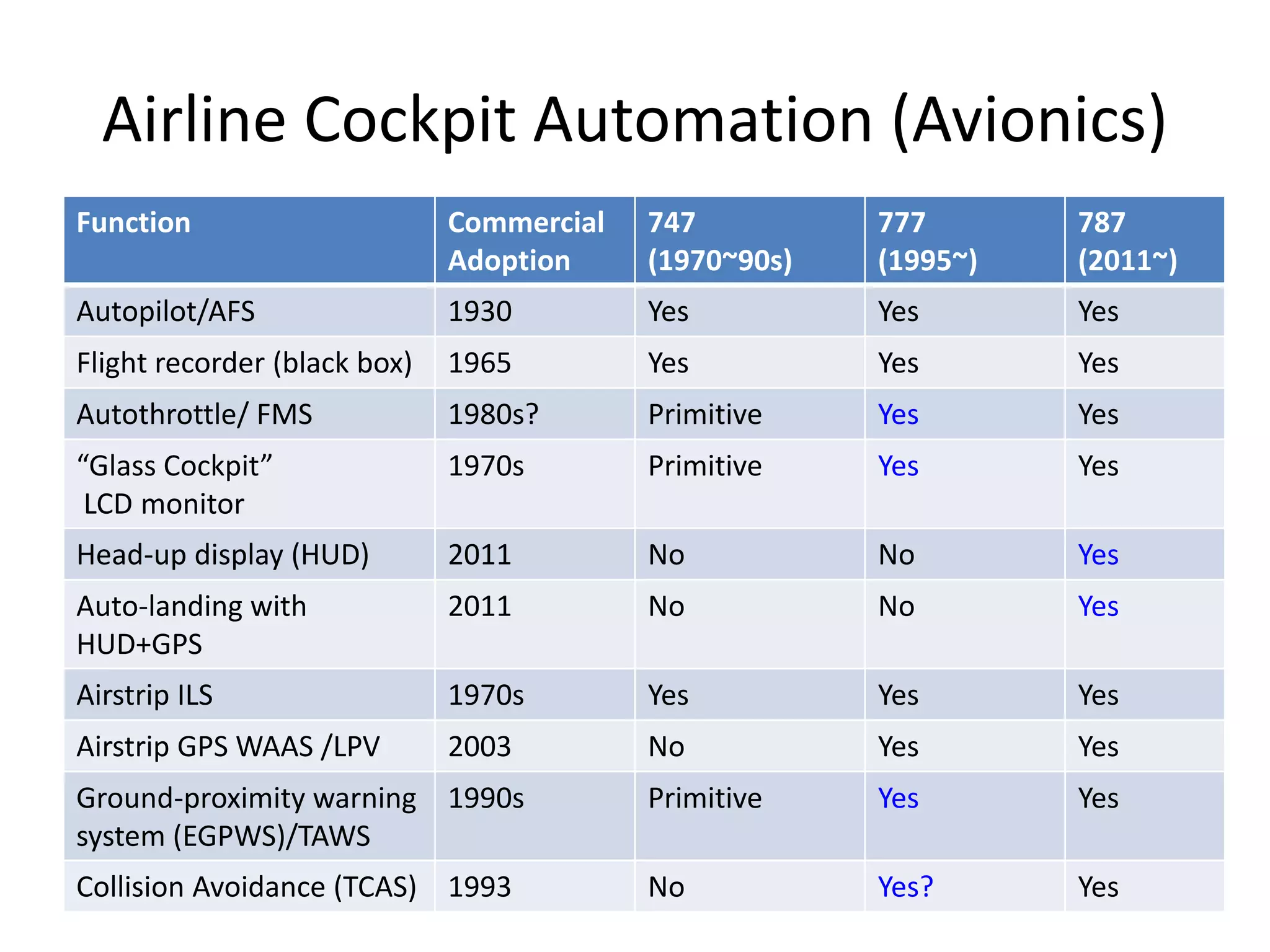


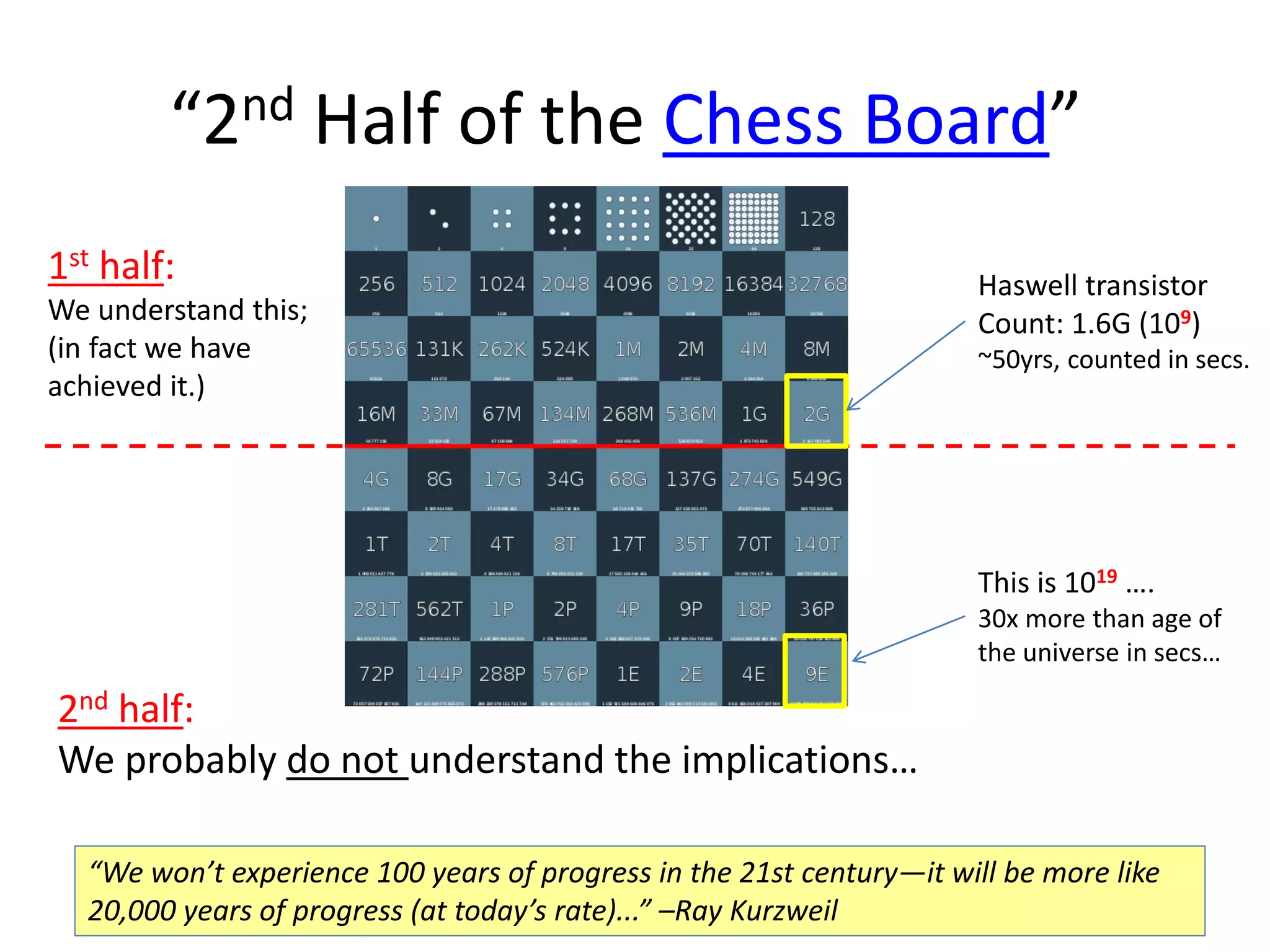

![– Rapid Growth (new equipment, new workers)
• E.g. SE Asia airline industry growing rapidly
– Global Competition (short-term thinking)
• E.g. Training, outsourced maintenance, crew fatigue from multiple flights…
• LCC airlines, pressure for reducing “gate turn-around”
2. Cutting Corners on Quality/Safety
[Asiana] about 0.5 percent of SFO’s 600 daily landings. Its go-around total, however, is well
above that… One such aborted landing happened July 19, just days after SFO reopened the
runway where Flight 214 crashed. The Asiana jet pulled out of its landing just 14 seconds
from touchdown. (source link)](https://image.slidesharecdn.com/asianaairlinescrash-keylearnings-2013-sep-150313043021-conversion-gate01/75/Asiana-airlines-crash-key-learnings-2013-sep-22-2048.jpg)
